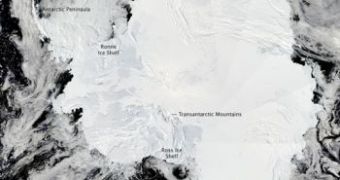Nowadays, tracing a map is not a big deal, thanks to satellites and computers, but tracing an accurate map of Antarctica is not so easy. Scientists from the Goddard Space Flight Center in Greenbelt, Maryland, worked for the last eight months to connect 3.5 million geographic points around the continent and reveal an Antarctic coastline of 33,300 miles.
The team benefited of high-resolution satellite images and the latest NASA computer software. Their achievement is even higher as it allows calculating the rate and the amount of ice that the continent loses. Antarctica holds 60 percent of the global freshwater supply, as it contains the world's largest ice sheet.
Satellite imaging has already shown that the continent is losing ice, but nobody knows exactly how much, as no one has been able to calculate it so far without the technology and a very accurate map. Earlier mappings of the antarctic continent did not include all the details and sometimes islands or shadows were believed to be continental landmass.
The separation point between the land and the ice is called the “grounding line”. Scientists consider it to be essential to calculating the amount of ice lost by the continent, because ice usually suffers significant changes in its mass at the meeting point between the water and the ice sheets. The ice in Antarctica moves by generally flowing from the center of the continent towards the edges, lowering towards the sea and finally lifting back up and floating.
Robert Bindschadler, a cryosphere scientist based at Goddard, presented his team's work at the International Polar Year Science Conference in Oslo, Norway, in June. He said that the “project has been a major achievement to come from the International Polar Year. This project included young scientists, it was an international effort, and it produced freely available data - all from satellites,” ourAmazing planet cited.
Scientists' next step is to analyze further satellite data to find out the thickness of the ice sheet at the edges of the continent. With all this information combined, they will be able to say how much ice is Antarctica losing.

 14 DAY TRIAL //
14 DAY TRIAL //